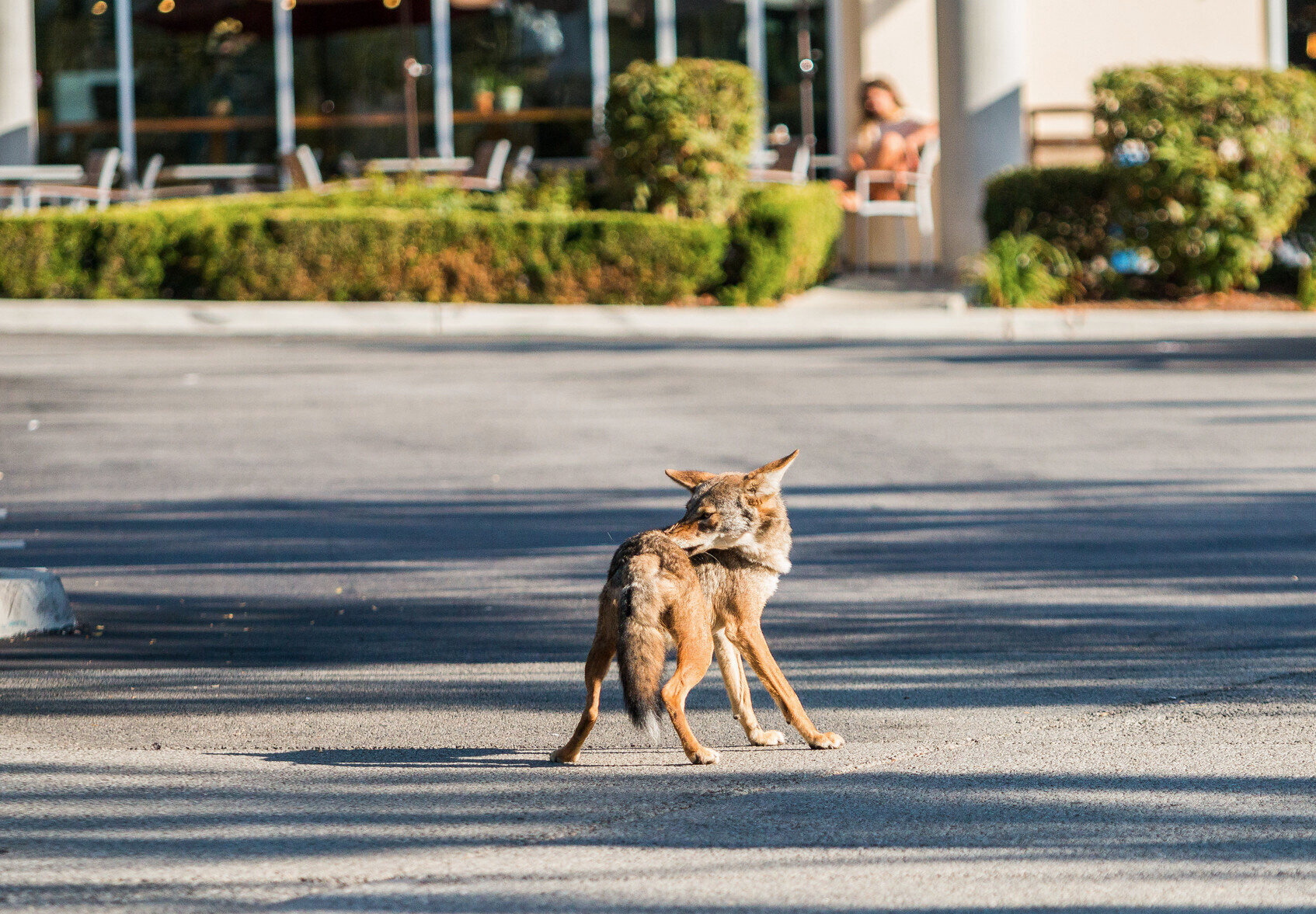For conservationists at North Carolina’s Bald Head Island, the decision has been made to restore balance between abundant predators and some of their endangered prey species.
Staff members with the Bald Head Island Conservancy worked through the summer to ward off hungry coyotes on sea turtle nests. Staff used wolf urine, PVC poles, and even human presence - non-lethal tactics that have thus far failed to thwart depredation on the vulnerable turtles.
The Conservancy turned to Bald Head Island Village for guidance, which acted by hiring a trapper who will begin trapping coyotes with approved traps as early as January.
The Conservancy estimates coyotes have managed to eat an estimated 300 sea turtle eggs on the island this nesting season alone.
Loggerhead and Green Sea turtles are the most abundant species, both of which hold endangered status.
This season, the Conservancy has observed 169 nests.
Dr. Chris Shank presented the Conservancy’s concerns with coyote depredation to the Village Council in July. Shank told the Council at that time that coyotes on the island showed little to no fear of humans during their approaches to the turtle nests. The Village obtained a permit in August for the statewide coyote trapping season, which begins Nov. 1 and ends Feb. 29. In September, the Village Council directed staff to hire a trapper.
The Conservancy relies primarily on summer interns, meaning the start of September signals the end of night patrols to curb coyote depredation. Coyotes were striking nests between 2 AM and 6 AM according to staff.
Coyote populations are noted as healthy and abundant across the state.
The North Carolina Wildlife Resources Commission has rolled out its own coyote management plan, which includes mention of endangered sea turtle protection.
The plan recommends both lethal and nonlethal methods to protect sea turtle eggs. According to the plan, removal must be properly timed and targeted, with lethal and nonlethal coyote management methods being fully warranted to protect sea turtle species due to their federally-listed threatened and/or endangered status.
Hunters killed approximately 45,000 coyotes while trappers took an estimated 6,300 coyotes across the state of North Carolina during the 2016-2017 season, according to the N.C. Wildlife Resources Commission.
Trapping relieD upon Nationwide.
Just a few states north, New Jersey has also relied on trappers recently to mitigate red fox depredation on endangered piping plover nests on the NJ coastline.
New Jersey Department of Environmental Protection contracts with the U.S. Fish and Wildlife Service to trap abundant foxes in an attempt to give endangered beach-nesting birds a fighting chance at population rebounds.
As was the case with North Carolina’s coyote program, New Jersey’s fox management program was met with a fair share of criticism; some of which contended that endangered species should be left for nature to sort out on its own without human intervention.
John Heilferty, acting chief of the Endangered and Non-Game Species Program under the DEP’s Division of Fish and Wildlife, said the state is obligated by law to protect endangered species.
“Whether people think it’s fair or not is not mine to judge or to comment on,” he told local media earlier this year.
“It’s really not a matter of fairness if they even wanted to characterize it that way. It’s a matter of what’s required by law.”
As reports pointed out, when species are listed as threatened or endangered at the federal level, attempts to conserve and protect must be made.
Heilferty noted plovers and other species do not belong to just New Jersey residents, but to the nation as a whole. New Jersey has an obligation to protect them.
Signage, rope, and fencing is placed upon a stretch of beach in Connecticut to protect nesting shore birds. (Photo | Furbearer Conservation)
As is also the case in both states, lethal trapping actions are coupled with non-lethal hazing attempts to mitigate and manage abundant predators rather than hold hierarchy of one species over another. The implementation of seasonal trappers also opens an avenue for proper and ethical usage of abundant predators through procurement of fur pelts when the animal’s hides are considered usable and valuable.
Licensed trappers are commonly contacted and in some cases, formally contracted to reduce abundant populations of fur bearing predators such as coyote, foxes, raccoons, opossums and skunks in areas where endangered birds and reptiles are detrimentally impacted by depredation.
In 1998, California animal rights activists were successful in pushing a full ban on usage of foothold traps to manage predator populations, much to the dismay of conservation organizations like the National Audubon Society who supported regulated trapping of predators like the red fox to reduce impact on endangered birds like egrets and Caspian terns.










How are abundant and urbanized wildlife adapting to shifts in human presence? Some species feel the strain while others thrive.